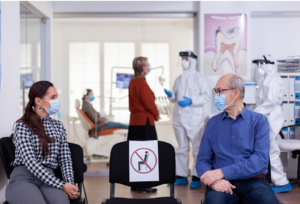There is a fine line between providing compassionate, high-quality care to residents and complying with changing regulations in the assisted living industry. As compliance becomes more complex, so do the risks. Non-compliance can lead to fines, legal challenges, and—most critically—damage to the well-being of residents and your facility’s reputation. But there’s a way forward: strategic risk management, streamlined HR processes, and employee engagement that goes beyond lip service.
You don’t need to fear the compliance jungle. What you need is to simplify it. In this post, we’ll show how assisted living facilities can simplify risk management using better HR processes, technology, and employee engagement to reduce risks and improve care.
Why Compliance Is So Complex—And Critical
Assisted living facilities have to follow a lot of rules at local, state, and federal levels. These rules cover everything from healthcare standards to worker safety and residents’ rights. Add in licensing requirements and quality checks, and it’s clear that compliance isn’t just another task—it’s the foundation of your facility.
But there’s an important truth: compliance is more than a paperwork issue. It’s about people. The staff who care for residents daily are your frontline in compliance, whether they’re delivering medications, managing meals, or ensuring cleanliness. When your team is fully engaged, properly trained, and motivated, they become compliant workers and ambassadors of quality care. And that’s where strategic risk management comes in.
The Strategic Approach To Risk Management
1. Leverage Technology For Compliance Tracking
Investing in HR software that integrates compliance tracking, employee training records, and regular updates on healthcare regulations can streamline the process. Tools that provide automated reminders for upcoming certifications or training deadlines ensure that no one slips through the cracks.
The best part? These systems don’t just simplify the paperwork—they free up your HR team to focus on more critical issues, like fostering employee engagement and improving care quality.
2. Engage Employees Through Training And Empowerment
Risk management starts with a workforce that understands and values compliance, and the key to achieving that is engagement. Engaged employees aren’t just doing their job—they’re invested in it. And investment starts with empowerment. When your staff feels they have the right tools, knowledge, and support, they’re far more likely to comply with regulations and minimize risks.
Here’s where HR strategy and training intersect: Training shouldn’t be a dull requirement. It should be seen as a tool for empowerment. When your employees know why a regulation exists and how it impacts patient care, they become stakeholders in the process. Whether it’s medication administration protocols or updated guidelines on patient mobility, engaged employees don’t see compliance as a burden; they see it as part of their mission.
How Employee Engagement Helps Reduce Risk
At the heart of your facility is your staff. They’re not just workers—they are the pulse of your compliance efforts. If you want to reduce risks and ensure top-quality care, your strategy should start with employee engagement.
1. Recognition And Rewards: The Best Way To Keep Your Staff
Let’s talk about recognition—not the kind where you hand out a “best employee” plaque once a year, but a system that makes your staff feel valued every day. In an industry where burnout is a serious issue, recognizing employees for their hard work can make all the difference in retention and performance.
Imagine an employee who has been with your facility for two years. They’ve adapted to new regulations, handled tough residents, and worked tirelessly under stress. Now imagine they’ve never been told “thank you” for their dedication. What are the chances they’re still motivated?
On the flip side, a culture of consistent recognition—whether it’s a note of appreciation, a shout-out at a team meeting, or a points-based rewards system—fosters loyalty. This isn’t just about making your staff feel good (although that’s important too). Here are the top 10 ideas you can implement.
Engaged employees are proven to be more productive and far less likely to leave their jobs. When they stick around, they get better at their jobs, manage compliance more easily, and contribute to a safer, more compliant environment.
2. Why Employee Engagement Reduces Compliance Risks
When employees feel valued, they pay more attention to the details that matter—like following protocols to ensure medication is delivered correctly or making sure safety regulations are strictly adhered to.
Engaged employees are less likely to cut corners, ignore protocols, or make errors. They care about doing things the right way because they feel invested in the success of the facility—and the safety of the residents.
Often, non-compliance stems from employee burnout, miscommunication, or a lack of training—all of which can be mitigated by building a highly engaged workforce. When employees are happy and motivated, they don’t just follow the rules; they actively contribute to a culture of safety and care.
Streamlining HR For Compliance And Risk Reduction
HR is at the core of compliance management. By simplifying HR processes, you ensure your facility is well-staffed with a motivated team and always in compliance.
1. Simplified Onboarding For Compliance
Onboarding is your opportunity to set the tone for compliance with new hires. Too often, it’s treated as a mundane task—an endless parade of paperwork. But what if onboarding was about showing new employees their role in maintaining the facility’s safety and compliance standards?
Simplifying onboarding with clear, accessible content about your facility’s expectations, protocols, and regulations can set new hires up for long-term success. Technology can help here too, with e-learning modules that ensure every new team member is trained from day one.
2. Retention Through Continuous Development
The best way to retain engaged, compliant employees is to offer them ongoing development opportunities. Leadership training, certification programs, and skills workshops show your employees that you value their growth—and keep them sharp and up-to-date on the latest compliance standards.
When employees feel they’re learning and growing, they stay longer. And when they stay longer, they get better at their jobs. This creates a ripple effect: more experienced employees mean fewer mistakes, better compliance, and lower risks.
Simplify, Engage, And Thrive
Risk management and compliance in assisted living facilities don’t have to be complicated. With the right strategies—simplified HR processes, employee engagement through recognition and rewards, and technology that tracks and manages compliance—you can create an environment where compliance is second nature, and your facility thrives.
When your staff feels valued and engaged, they take ownership of their work, and that ownership translates into a culture of safety, care, and compliance. By investing in your employees, you’re not just reducing risks—you’re ensuring the future success of your facility.
So, simplify where you can. Engage your team at every turn. And remember: Compliance isn’t just about avoiding risks. It’s about creating a place where both staff and residents feel secure, cared for, and valued.It’s time to make compliance not just easy but meaningful. Connect with Abundantly today and let’s shape the future of assisted living together.




